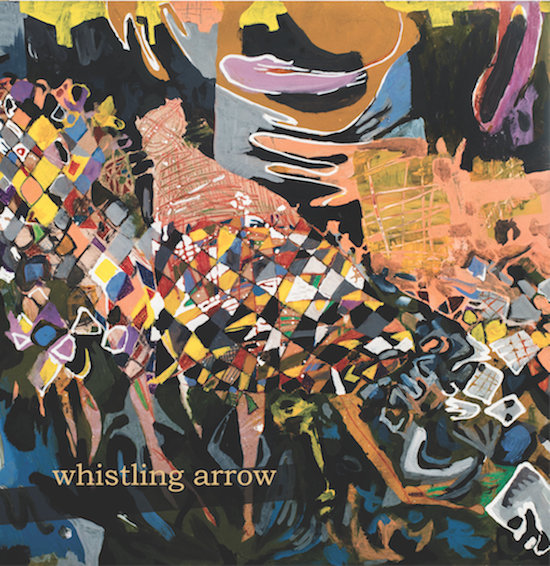In 2017 Laura Cannell, Andre Bosman, Charles Hayward and three out of the four-piece Ex-Easter Island Head ensemble Ben Duval, Ben Fair and Jonathan Hering got together to record some music at Liverpool’s Parr Street Studios. The result is a seven-track album called S/T and the ensemble, in this particular shape, call themselves Whistling Arrow.
These particular individuals found themselves flung together through Cannell’s arts-funded platform Modern Ritual, which she developed as a collective of musicians and writers responding to the concept of what ‘modern ritual’ means to them. And though Cannell’s collective is not the same thing as the Whistling Arrow ensemble, it’s still critical to its existence, because if it hadn’t been for the Modern Ritual tour, and indeed the concept of the collective, then these musicians would likely never have met, and never have discovered their shared love for creatively exploring the convergence of modern and traditional, ritual and tradition, myth and folklore and the blurred line of mixed realities.
And the disparity doesn’t stop there. Comedian, writer and director Stewart Lee got involved too. Clearly a fan of Cannell’s music (he featured her music on his BBC 3 radio show in 2018), Lee has written the liner notes for Whistling Arrow’s debut, dropping in a lot of comparative band names and song titles and trying to draw a line around the music contained in this unusual release. Because it is just that.
It begins with a tinkling and the soft blow of a recorder. But then the beat kicks in, and then the guitar and the air starts coming down hard on the double recorders and then the beat changes and the recorder doesn’t keep time and it doesn’t go where you think it’s going. Cannell’s recorder isn’t conjuring an avian tone like the title suggests, but something more pressing and useful like a medieval work song or ancient woodland march. You wouldn’t have ever thought that music like this had been made before, but in his notes, Lee suggests that ‘Cuckoo’ sounds a bit like The Fall’s ‘Hip Priest’ and actually, he’s pretty spot on.
The medieval ambiance becomes even stronger in the following track, ‘Whistling Arrow’, because this time, Hayward falls in line. Paired with his rumbling toms, and the low, smooth basso-continuo surge of Ex-Easter Island Head, Cannell plays her violin and the combined sound comes together almost like wheeze of a medieval bagpipe.
While Hayward (This Heat, Camberwell Now), as the oldest and most experienced musician in the group, provides the structure that rhythm lends to any music, and the contributions of EEIH and Bosman radiate with subtlety and consistency throughout the recording, it’s Laura’s distinctive violin and recorders that lend the distinguishing identity to this release. It’s not many bands that can boast an integrated medieval section these days, or any day.
Hayward takes the lead in ‘Forking Paths’ which plays through like a percussive exposition, doing away with any traditional pitched melody or phrasing. Instruments playfully jangle, whistle, chime and strike to great effect in this six-minute textural jam.
‘In Wooded Country’ and ‘In Flooded Country’ are a pair; dropping the notion of a beat altogether they work well as ambient pieces. Tethered to the prepared guitar resonances of EEIH and the diffuse electronics of Bosman, Cannell’s violins can be heard scratching and skittering along the surface of both tracks.
The remaining two tracks seem less structured and more interpretive and wandering than the rest of the record. Everyone chimes in on both tracks, culminating in a sound that feels representative of all the musicians present, but also like unchartered territory, with ‘Magician’ providing an epic closure to this rather special, and spontaneous session.
It’s tempting to describe this music as existing within the neighbourhoods of ‘folk’ in its various iterations, but ‘folk’ is a problematic term and this is not a folk record. Hayward’s playing might invoke Pentangle-style moments of jazz-folk-rock, but if you remove Cannell from the equation, you’d have a record that is more akin to free jazz or post-rock. It’s Cannell’s singular contribution amongst this group of art rockers that leads the listener down the path – albeit very overgrown – of tradition. S/T is a hybrid and epic jam with a pot-luck aesthetic. Put musical nomenclature aside for this one and you’ll be surprised and delighted.


